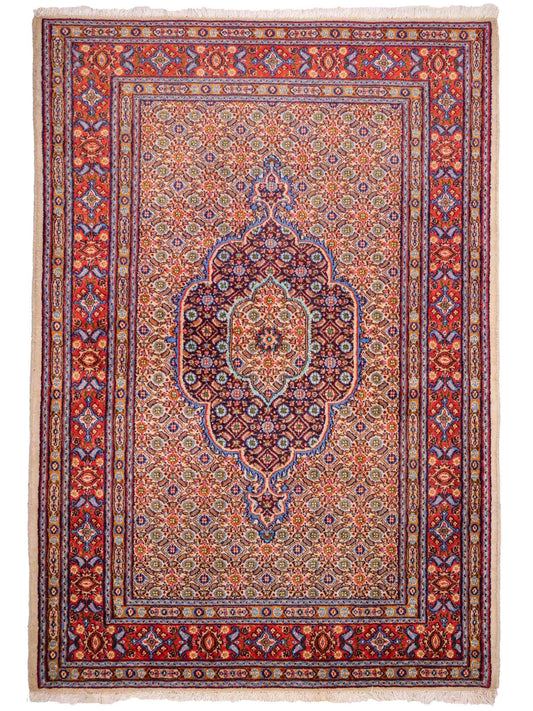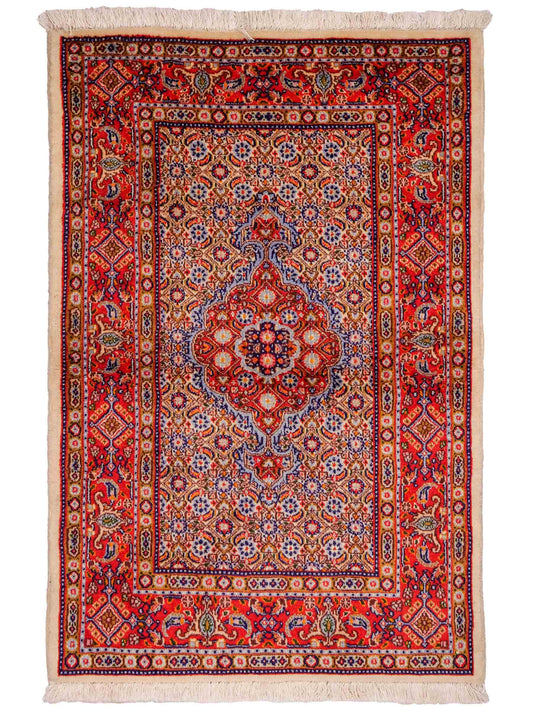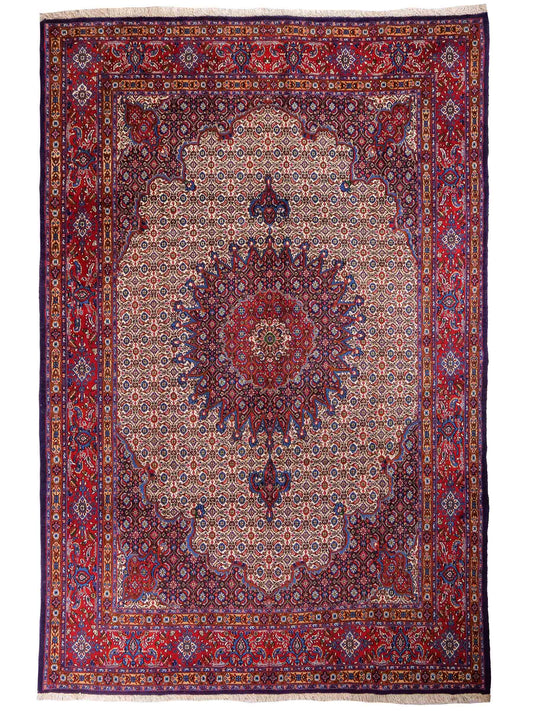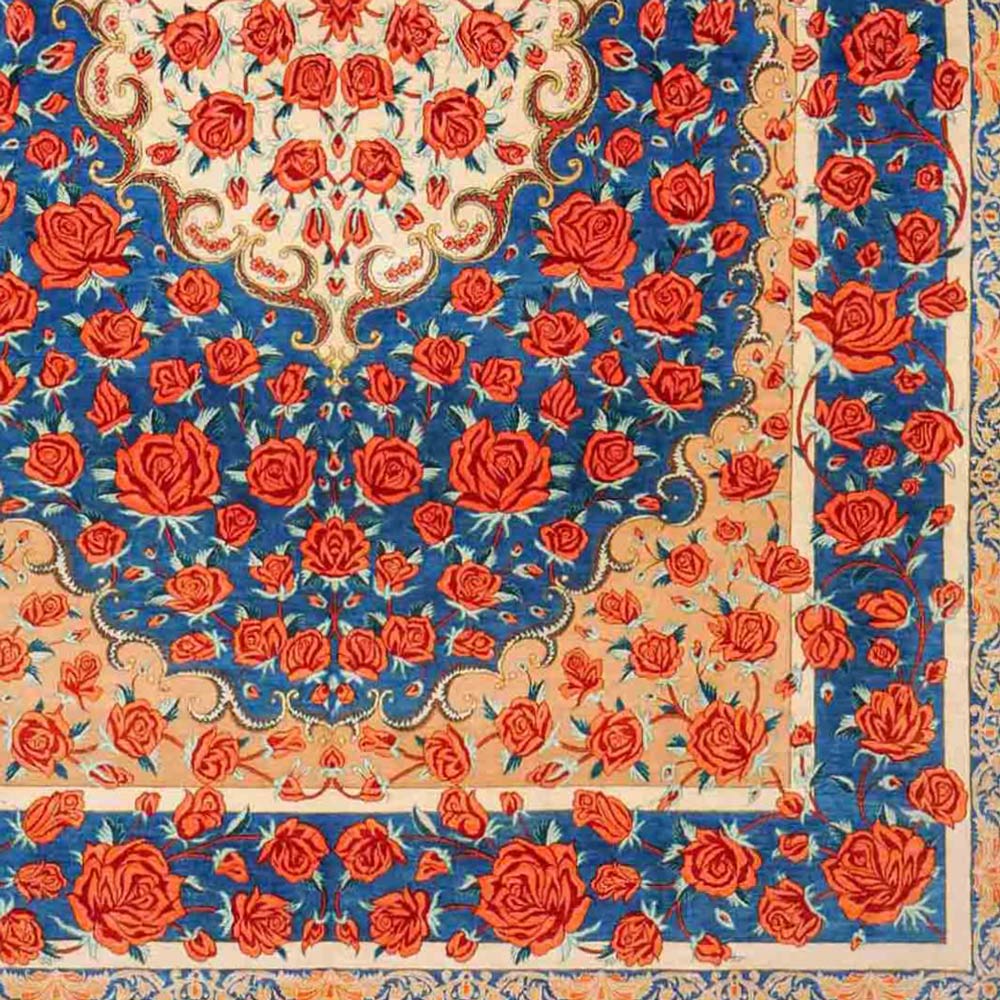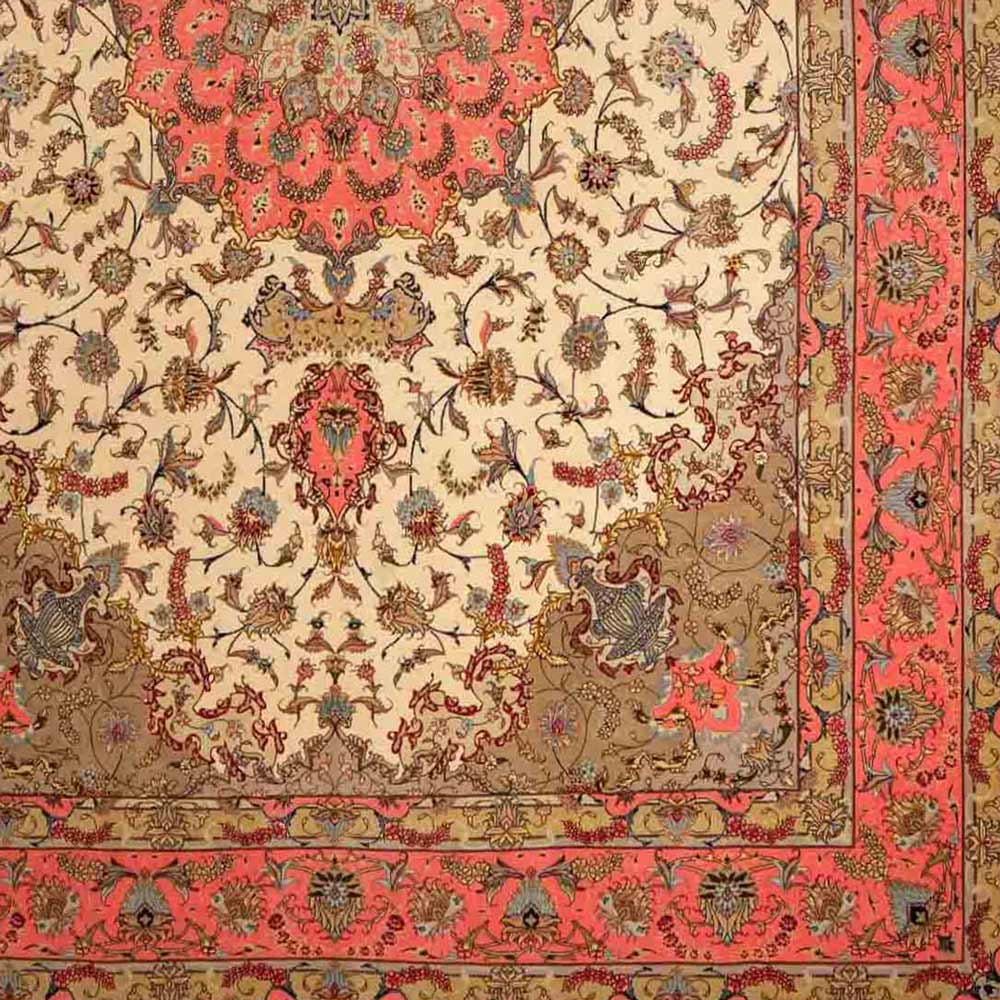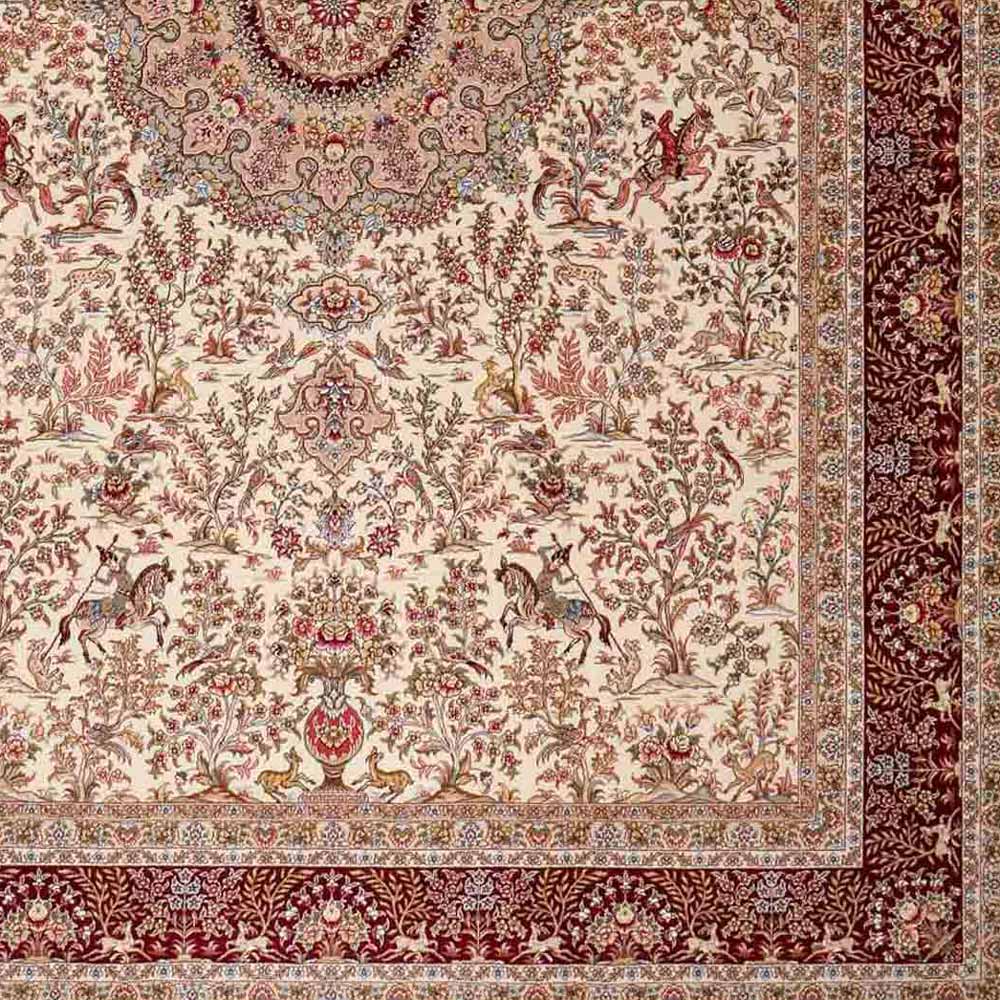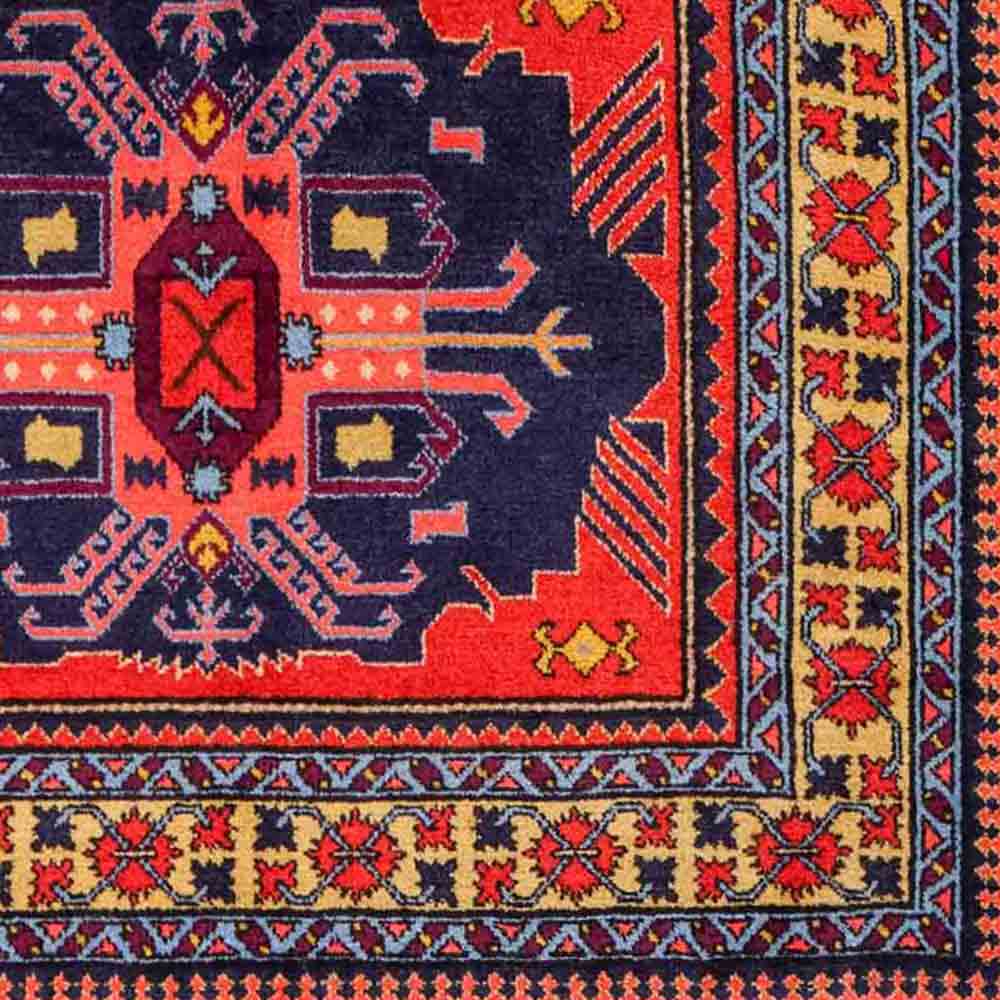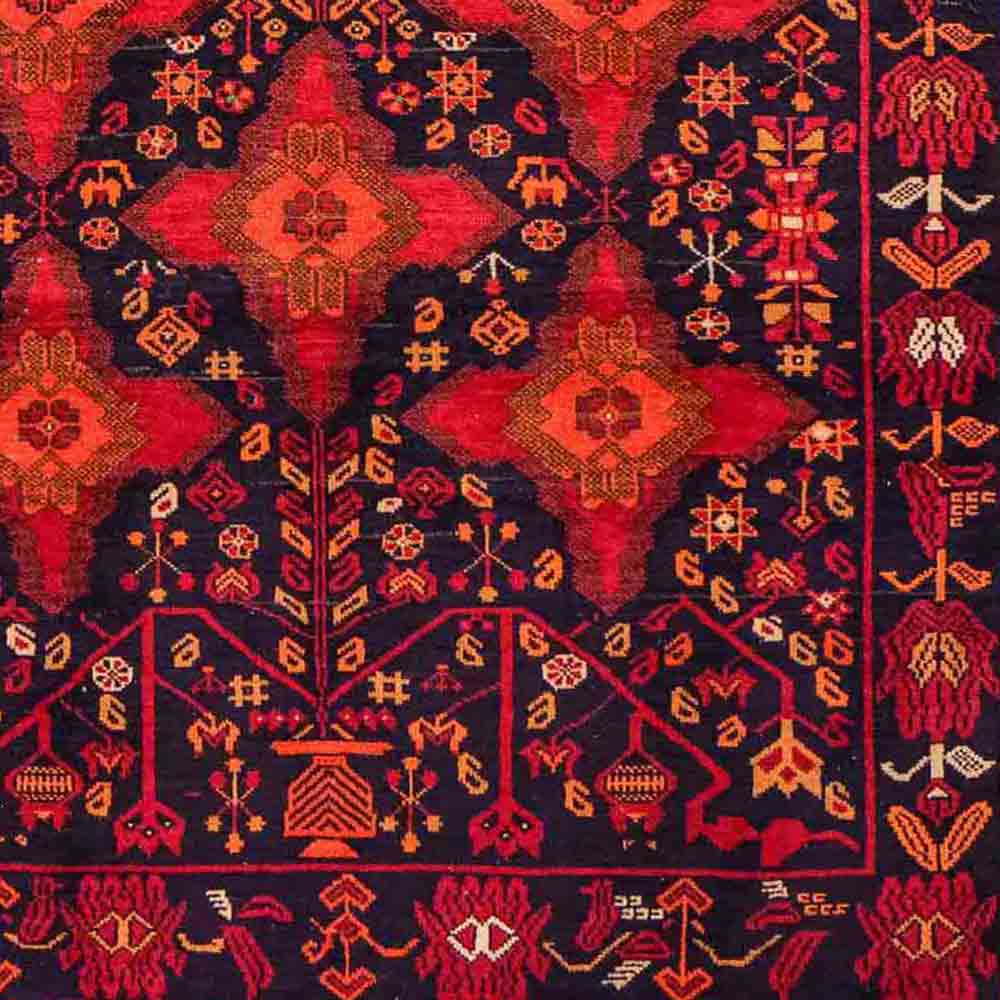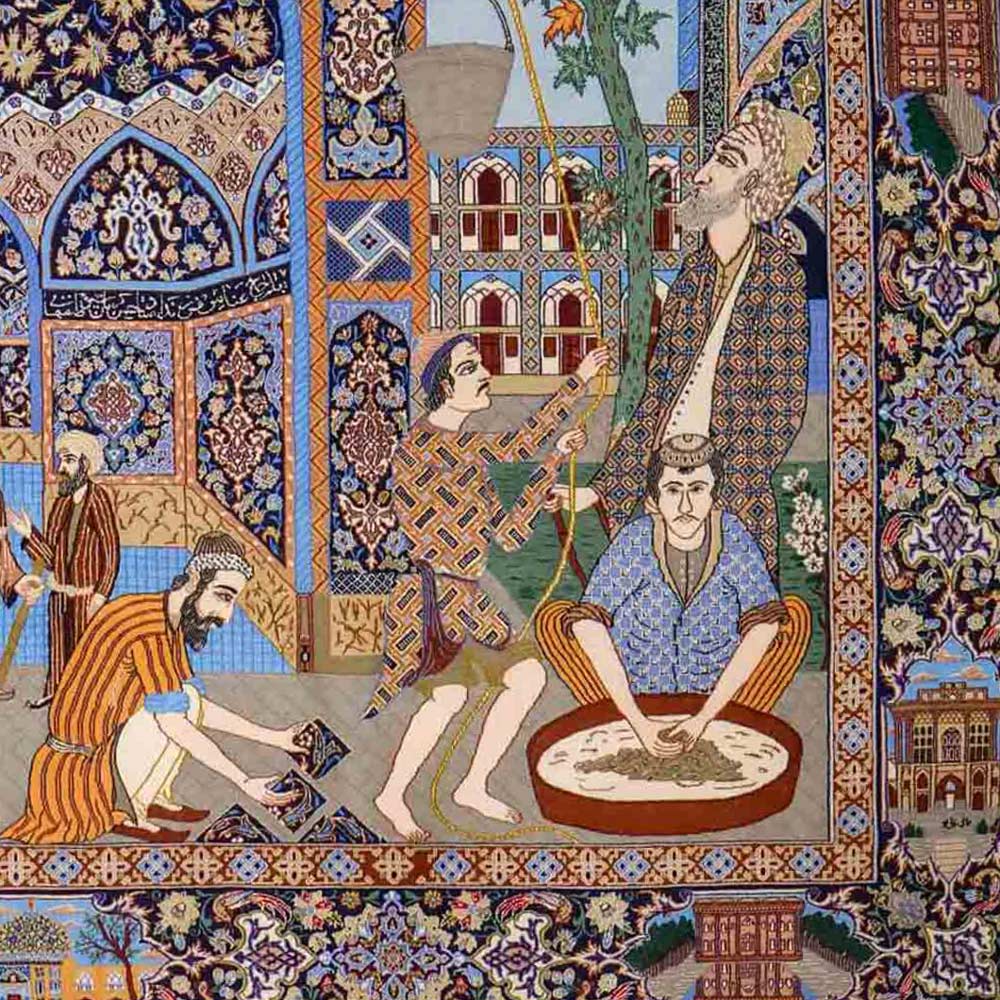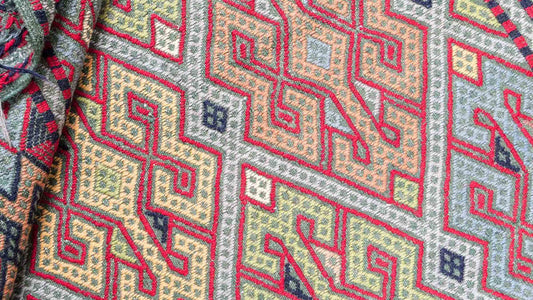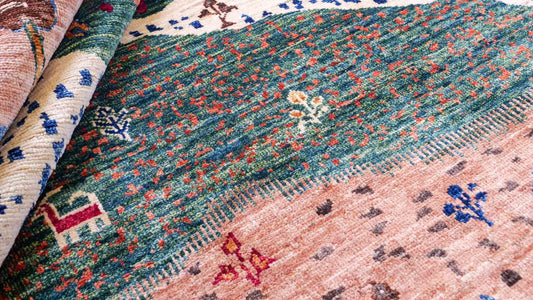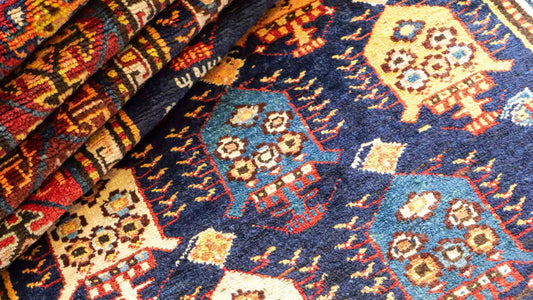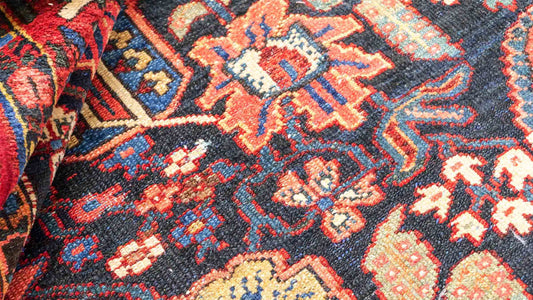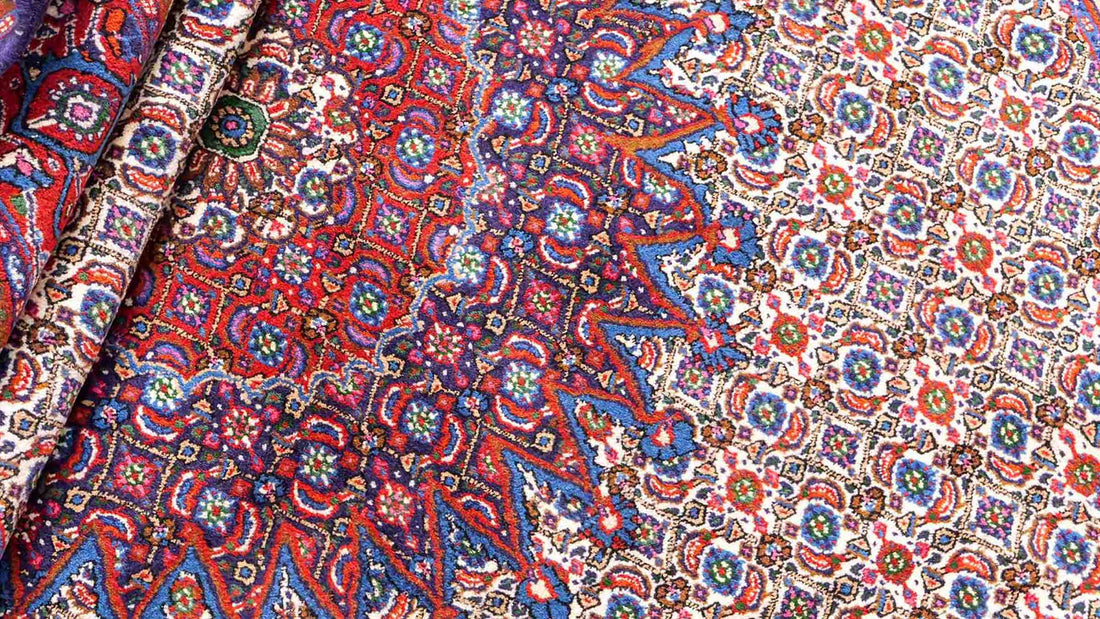
Moud
Daniel KhademiExperience the fascinating world of Moud rugs—Persian one-of-a-kind pieces boasting a rich tradition of weaving, extraordinary variety of patterns and colors, and deep cultural heritage. In this guide, discover what makes Moud rugs so special, how they are crafted, and why a genuine hand-knotted Moud is among the most value-stable favorites for discerning decor enthusiasts.
Moud Rugs: Key Facts at a Glance
- Origin: Moud, Chaharmahal & Bakhtiari Province (eastern Iran), a region rich in weaving tradition
- Material: Finest sheep’s wool (sometimes cotton warp); often genuine natural dyes
- Knot Density: 160,000 – 300,000 knots/m² (premium quality, detailed, durable)
- Design & Patterns: Floral ornaments, large oval medallions, mandala-like motifs, delicate arabesques, often all-over designs or medallion/border compositions
- Color Palette: Deep blue, red, gold, earth tones, warm neutrals
- Special Features: Exceptional drawing, long-lasting, collectible value, also suitable for high-traffic areas
- Recommended Spaces: Living room, dining room, library, modern and classical settings, decorative eyecatcher & investment piece
Explore our curated collection of exclusive Moud Rugs & Designs —find your one-of-a-kind masterpiece today!
Origin and History of Moud Rugs
Insights into a Geographic Treasure Trove
Moud is located in a mountainous region in western Iran, surrounded by impressive landscapes shaped by rivers, forests, and mountains. This area is rich in natural resources and enjoys a balanced climate that favors sheep shearing. The influence of the geographic conditions is reflected in the use of local materials—especially high-quality wool, which is a key element in rug production. The natural environment and artisanal tradition produce rugs that are not only aesthetically pleasing but also functional and durable.
A Journey Through Time
The weaving tradition in Moud goes back centuries and is closely tied to the cultural roots of the region. Moud was valued for its artistic rugs in antiquity and reached a peak in rug production during the Safavid dynasty. The influence of numerous trade routes led to a rich cultural exchange, fostering unique design features and techniques in the weaving process. Moud rugs often combine geometric forms with a tribal flair, reflecting the traditional way of life.
The Manufacturing Process of Moud Rugs
A Focus on Craftsmanship and High-Quality Materials
Moud rugs are traditionally made from high-quality wools and cotton. The wool is sourced from local sheep breeds, whose natural lanolin ensures durability and resilience. The basic steps involve dyeing the wool with natural dyes, designing the pattern, and the actual knotting process. This demanding work requires great patience and skill, making Moud rugs a true hallmark of artisanal excellence.
The Knot Density of Moud Rugs
The knot density usually ranges between 160,000 and 300,000 knots per square meter, allowing for a high degree of fineness and pattern detail. Some Moud rugs employ specific knotting techniques that give them a unique texture. These techniques differ from other regional rugs and require considerable expertise.
Patterns, Designs & Colors of Moud Rugs
Unique Beauty and Cultural Influences
The design of Moud rugs is distinguished by unique floral and geometric motifs, often inspired by nature. These rugs feature a variety of patterns, from stylized flowers to complex geometric forms and even narrative scenes. Characteristic are deeper shades such as blue, red, and gold, which connect to Iranian tradition. Compared to rugs from other provinces, such as Isfahan or Tabriz, Moud rugs are recognized for their more rustic designs and premium wool base, lending them a vibrant yet authentic appearance.
The Classic Moud Rug Color Palette
Typical designs include mandala-like patterns, oval medallions, and floral elements. The color palette is often earthy and warm with bold tones that enliven a room while also soothing. The attention to detail and diversity of patterns ensure that every rug is unique and tells its own story. This creative freedom reflects the culture and character of the people of Moud, making each rug a genuine work of art.
Regional Differences and Styles
Within the Moud region, different styles and designs are influenced by local artisans and community traditions. This diversity is evident in varying patterns, color palettes, and knotting techniques. For example, characteristic large medallions and floral borders may differ among families and tribes. These diverse approaches express regional identity and give each rug its one-of-a-kind character.
Design Classics Compared: Ilam, Kerman, Kashan & Moud Rugs
| Feature | Ilam | Kerman | Kashan | Moud |
| Origin | Western Iran, Ilam / Elam Province | Southeast Iran, Kerman Province | Northeast Iran, Isfahan Province |
Eastern Iran, South Khorasan Province |
| Material | Premium sheep's wool | Premium sheep's wool | Premium sheep's wool, rarely silk | Premium sheep's wool |
| Knot Density | 200,000 – 300,000 knots/m² | 160,000 – 1,200,000 knots/m² | 120,000 – 600,000 knots/m² | 160,000 – 300,000 knots/m² |
| Design | Floral and geometric, medallions | Floral and geometric medallions, mirror motifs | Floral and geometric medallions, tableaus |
Floral and geometric medallions, tribal designs |
| Colors |
Reds, blues, earth tones, natural dyes |
Reds, blues, earth tones, natural dyes |
Reds, blues, greens, earth tones, natural dyes |
Reds, blues, earth tones, natural dyes |
| Features |
Authentic, lively patterns |
High-quality, detailed, unique designs |
Naturally produced, long-lasting |
Rustic, tribal, artisanal, authentic |
| Value/Price Range |
Mid-range, growing interest |
Mid to premium range, collectors’ items |
Mid to premium range, investment grade |
Mid-range, value stable |
Checklist: How to Recognize a Real Moud Rug?
- High-quality, soft sheep’s wool with natural sheen ✔
- Natural dyes without chemical odor ✔
- Dense weave (at least 160,000 knots/m²) ✔
- Crisp patterns, fine floral details, central mandala or all-over ornamentation ✔
- Pattern on the back mirrors the front design ✔
- Strong edges & fringes, no flaws or fraying ✔
- Certificate of authenticity and origin should be provided ✔
Decorating Ideas: Properly Showcasing Moud Rugs
Moud rugs are a perfect match for traditional and oriental interiors. They harmonize especially well with wood furniture and antique decorative elements. Yet, they can also be used in modern rooms to create a warm and inviting atmosphere. Combine them with light or neutral colors to create an elegant and stylish ambiance.
Care & Longevity: Preserving Your Moud Rug
How to Keep Your Moud Rug Beautiful for Years:
- Vacuum regularly, but do not beat
- Treat stains immediately with lukewarm water & a cloth
- Avoid direct sunlight
- Professional cleaning recommended every 1–2 years
- Find more care tips in our blog post: *How to Care for Hand-Knotted Rugs*
Moud Rugs: Collector’s Items & Investment Potential
By purchasing a Moud rug, you are investing not only in a beautiful work of art but also in valuable craftsmanship of deeper worth and historical significance.
- Appreciation: Especially high-quality Mouds have the potential to increase in value over time. This stems from various factors, including knotting technique, material selection, and design rarity. Like many works of art, well-preserved antique Sarouks become sought-after collectibles, commanding significant appreciation on the market and making them attractive as investment assets.
- Collector’s Items: Mouds are excellent for collectors due to their variety of styles, designs, and sizes. A carefully chosen Moud rug not only tells a story but also becomes a treasured heirloom to be passed down through generations.
The market for handmade rugs is steadily growing, as more people recognize the uniqueness and emotional value of craftsmanship. Moud rugs unite art, history, and functionality in a unique way. They are not just an asset for any home, but also a valuable item that tells stories and can endure for generations. In a world increasingly dominated by mass production, individually crafted works of art are becoming ever more significant and valuable.
► For detailed tips & in-depth guidance, see our blog post: *Are Hand-Knotted Rugs a Good Investment?*
Request a personal style & purchase consultation for Moud rugs now!
FAQ – The Most Important Questions About Moud Rugs
What distinguishes a genuine Moud rug?
► Elaborate handwork, high-quality wool, genuine natural dyes, classic patterns (mandala, medallion, floral all-over designs), high knot density, and certificate of authenticity
Are Moud rugs suitable for everyday use?
► Yes—with durable wool, excellent workmanship, and sophisticated design, they are robust and highly versatile.
How do you properly care for a Moud rug?
► Vacuum carefully, do not use aggressive – especially not chemical – agents, and avoid direct sunlight. Regular professional cleaning will maintain their beauty and value. More in our blog post: *How to Care for Hand-Knotted Rugs*
Are Moud rugs a good investment?
► Very fine Moud rugs with distinctive patterns are stable-value collector and connoisseur pieces. Read more in our blog post: *Are Hand-Knotted Rugs a Good Investment?*
Where can I buy authentic Moud rugs?
► Only from specialist dealers and reputable online shops—always check for certificates of authenticity and expert advice. At JUPITER Intl, every hand-knotted, hand-tufted, and handwoven rug comes with a Certificate of Authenticity.
Conclusion: Moud – Persian Rugs Full of History and Style
Moud rugs stand for artistic Persian rug culture, the highest craftsmanship, and long-lasting value. They bring refined beauty, tradition, and emotional depth to any home.
Explore our curated collection of exclusive Moud Rugs & Designs —find your one-of-a-kind masterpiece today!
Related blogs & blog posts you might also be interested in:
→ Design Classics, Countries of Origin, Carpet Materials, Carpet Guide

